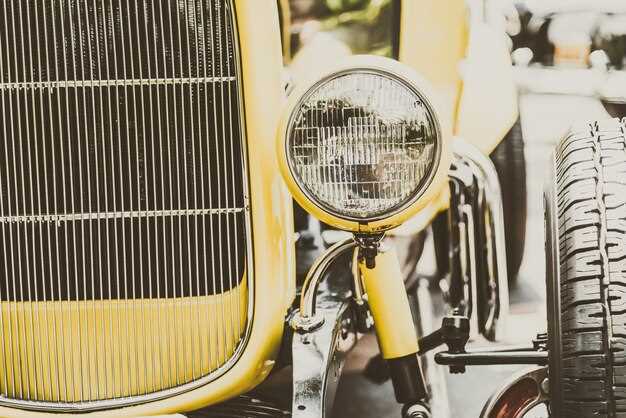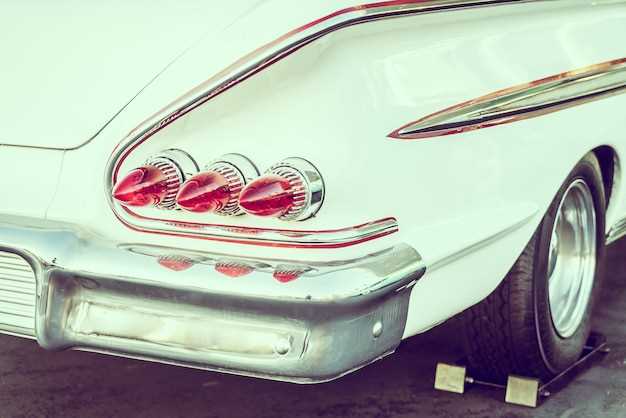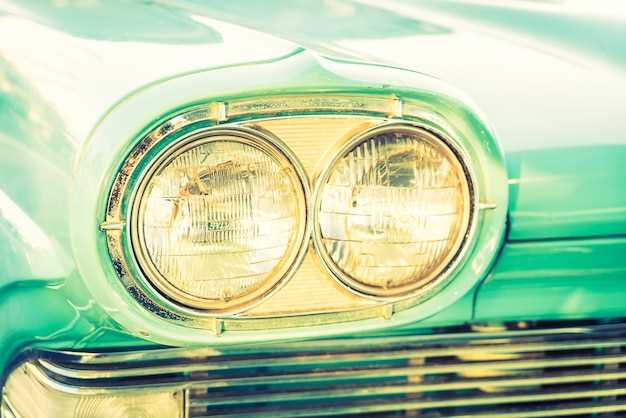
The world of vintage race car restoration is both exhilarating and daunting. Restoring a classic race car requires not only a deep appreciation for automotive history but also a set of specialized skills and knowledge. From sourcing authentic parts to understanding the intricate engineering of these vehicles, every step in the restoration process poses unique challenges that must be navigated with care.
One of the primary difficulties lies in finding parts that are not just functional, but also true to the original specifications. Many vintage race cars were produced in limited numbers and their components became obsolete decades ago. This scarcity often leads restorers on an exhaustive hunt, sometimes requiring global searches for authentic parts or even custom fabrications. Such efforts may drive up costs significantly, affecting the viability of the entire project.
Moreover, the restoration of vintage race cars is not simply about bringing the car back to its former glory. It also involves a deep respect for the car’s racing heritage. Preserving its historical integrity while ensuring reliability for modern racing conditions is a delicate balance that restorers must maintain. This requires a combination of technical know-how and a passion for motorsport, making the journey both challenging and rewarding.
Assessing Original Components vs Upgrades in Restoration

The restoration of vintage race cars poses a unique set of challenges, particularly when deciding between retaining original components and incorporating modern upgrades. Each approach has its own merits and drawbacks that must be weighed carefully.
Original components are often viewed as essential for maintaining the historical integrity of the car. These parts carry the vehicle’s legacy and ensure authenticity, which can significantly enhance its value and appeal among collectors. However, original components may have degraded over time, leading to potential safety issues or reduced performance. Restorers must assess whether these parts can be refurbished or if they pose a risk during racing.
On the other hand, upgrades can enhance the overall performance and reliability of a restored race car. Modern technology allows for improved performance metrics, including handling, braking, and engine efficiency. Upgrading components such as suspension systems, braking mechanisms, and engine management can result in a more competitive vehicle. However, relying too heavily on upgrades can detract from the car’s historical significance and originality, which is often a key consideration for enthusiasts and potential buyers.
Striking a balance between preserving the original essence of the race car and integrating necessary upgrades requires thorough assessment and planning. Restorers should evaluate the vehicle’s intended use, whether for competitive racing or display purposes. Additionally, considering the availability of original parts versus the benefits of modern replacements plays a crucial role in decision-making. Ultimately, the choice between original components and upgrades will significantly influence the restoration process and the final outcome of the vintage race car.
Navigating Regulatory Compliance for Vintage Racing

Restoring vintage race cars is an exciting yet challenging endeavor, with regulatory compliance being a critical aspect of the process. The regulatory landscape for vintage racing often includes various standards set by motorsport governing bodies and national transport authorities. Understanding these regulations is essential for ensuring that your car is both legally compliant and race-ready.
One of the primary challenges in restoring vintage race cars lies in the documentation required to demonstrate compliance. Owners must collect original specifications, historical data, and any modifications made during the restoration process. This meticulous documentation is crucial for verifying that the car meets safety and performance standards mandated by the racing organizations.
Moreover, different racing events may have distinct requirements regarding safety equipment, emissions standards, and vehicle modifications. For instance, while some events may allow for more extensive alterations, others may strictly adhere to original specifications. It is vital to carefully research the specific regulations that apply to the race events you plan to participate in, as this can impact both the restoration process and the overall performance of the car.
Additionally, vintage racing often poses unique challenges regarding parts sourcing. Many components may be outdated or hard to find, pushing restorers to either fabricate parts or adapt modern alternatives that comply with regulatory standards. This balancing act between authenticity and compliance can be a nuanced process, requiring a deep understanding of the rules governing vintage race cars.
In summary, navigating regulatory compliance for vintage racing involves a thorough understanding of documentation, event-specific rules, and parts sourcing. By addressing these challenges head-on, restorers can ensure that their vintage race cars are not only a testament to automotive history but also ready to compete on the track.
Finding Skilled Craftsmen for Specialized Repair Techniques
One of the most significant challenges in the restoration of vintage race cars is locating skilled craftsmen who possess the expertise required for specialized repair techniques. Many of these vehicles were built using methods and materials that are no longer common, making it imperative to find artisans who can replicate original processes and aesthetics.
Restoring a vintage car often involves intricate work that only seasoned craftsmen can perform. From bodywork that requires a deep understanding of metal shaping to engine rebuilding that demands experience with rare components, the skill set needed is specialized. This can narrow the pool of available talent significantly, as many mechanics focus on modern automobiles and may lack the necessary training in traditional techniques.
Networking within the vintage racing community can be an effective approach to discover these craftsmen. Attending car shows, joining restoration clubs, and seeking referrals from fellow enthusiasts can lead to connections with individuals who have the right skill set. Additionally, participation in forums dedicated to vintage car restoration can provide valuable insights and recommendations.
Another avenue to consider is specialized training programs and apprenticeships that focus on classic car restoration. These programs not only help foster new talent but also often have connections to seasoned professionals in the industry. Investing time in training or mentoring young craftsmen can help ensure the preservation of vital skills that are essential for future restorations.
Ultimately, finding the right craftsmen is a crucial step in overcoming the challenges associated with restoring vintage race cars. Their expertise can significantly impact the quality and authenticity of the restoration process, ensuring that these automotive treasures are preserved for generations to come.

